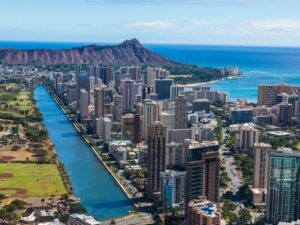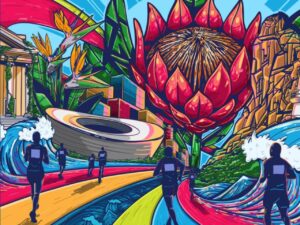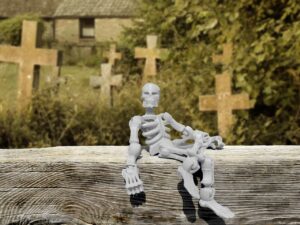[imagesource: Instagram / @onelovethelabel]
The V&A Waterfront remains far quieter than in years gone by, as the constant stream of tourists has all but dried up.
If you have made your way down quayside over the past few weeks, you may have noticed that the water in the harbour is a rather unusual hue.
It all started a few months ago, as the smell of rotting fish caused great consternation, with one woman rumoured to have “fled from her apartment”.
Fish died off due to the sheer numbers found in the harbour, and insufficient oxygen to support them all.
Renowned photographer Jean Tresfon shared some wonderful aerial shots of Cape Town on May 4 (see them all here), including this one of the V&A Waterfront.

His image was captioned:
Discoloured water in the Alfred and Victoria Basins. There was a recent fish die-off due to a system overload and resultant oxygen depletion when too many fish entered the harbour to escape feeding humpback whales.
The change in colour does make for some great pictures:
Why the hell was that water so blue today
pic.twitter.com/VvXjb9Npgk
— STOP KILLING QUEER AFRICANS (@ntandomatini_) May 9, 2021
How’s this milky V&A Waterfront
.
.#CapeTown #Waterfront pic.twitter.com/IzaOYHfpf8— TechnoBok (@TechnoBokMedia) May 9, 2021
Sadly, the cause of the colour change is what can be dubbed a graveyard.
In conversation with Ingrid Sinclair from the Two Oceans Aquarium, Cape Town Etc’s Robyn Simpson found out more:
As the fish started to decompose, the seals moved on, leaving the remaining corpses to diminish further. This process of decomposition also requires oxygen. All the while, ammonium is released, poisoning the already lifeless water.
Though we can no longer see the fish, it doesn’t mean they aren’t there. Remaining corpses are still decomposing on the basin floor. The translucent turquoise colour of the water is a result of a lack of oxygen combined with ammonium, scales, and oils from the decomposing fatty fish (similar to Mackerel).
Unfortunately, all marine life in the harbour basin has died. Species like muscles and anemones are able to sense ammonium and close themselves up as a protection measure, but not for long periods of time. Subsequently, the basin has seen no survivors.
The process of reoxygenating the water, which would occur naturally in an open bay, is hindered by the layout of the harbour.
There are an estimated 200 million litres of water in the harbour basin, and it could take months for the process of aeration to play out.
You can read more on that process here.
Perhaps it’s time to swing past the V&A Waterfront to get your Seychelles-esque shot for the ‘Gram, if you’re into that sort of thing.
[source:capetownetc]






